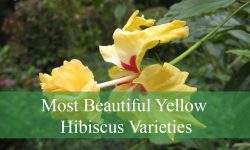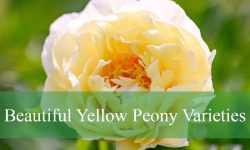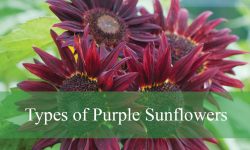Weeds with white flowers are a common sight in gardens, fields, and along roadsides. While some may see them as unwelcome intruders, many of these plants play important roles in local ecosystems. Their delicate white blooms often appear early in the growing season, making them among the first signs of spring in temperate regions.
Identifying weeds with white flowers can help gardeners and landowners manage their landscapes more effectively. Some species are harmless or even beneficial, attracting pollinators or improving soil health, while others can become invasive if left unchecked. Recognizing key traits such as flower shape, leaf structure, and growth habits is essential for proper identification.
This guide introduces 30 common weeds with white flowers, complete with descriptions and visual identification tips. If you’re a curious gardener or a nature enthusiast, learning about these plants will give you a deeper understanding of what’s growing around you.
Different Types of Weeds with White Flowers
White Clover (Trifolium repens)

White Clover is a low-growing perennial plant recognized for its trifoliate (three-leafed) foliage and distinctive globe-shaped white flower heads. The leaves often display a pale, crescent-shaped mark, and the flowers may occasionally show pink tinges as they age. It grows close to the ground, forming creeping mats that blend easily into turfgrass.
Biologically, White Clover is a nitrogen-fixing legume, meaning it enriches soil by converting atmospheric nitrogen into usable forms for plants. It propagates both by seed and through creeping stolons, which root at nodes to spread outward rapidly. It flowers primarily in late spring to summer and is commonly used in eco-friendly lawns and pasture systems.
This weed thrives in full sun to partial shade and prefers moist, well-drained soils, though it tolerates a wide range of conditions. It is commonly found in lawns, pastures, roadside verges, and disturbed areas across USDA hardiness zones 3 through 10. Its adaptability and soil-enriching ability make it both a beneficial and sometimes troublesome presence in landscapes.
Chickweed (Stellaria media)
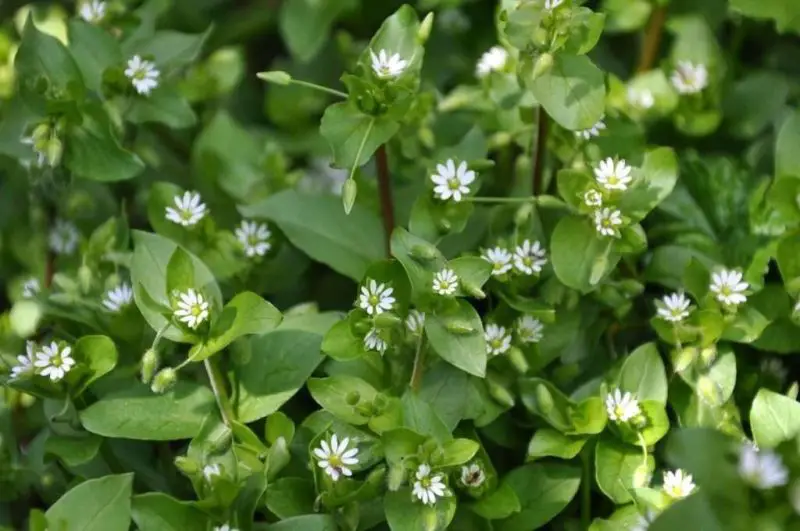
Chickweed is a delicate, cool-season annual weed identified by its tiny, star-shaped white flowers and smooth, bright green leaves. The flowers have five deeply notched petals, making them appear to have ten. Its slender stems often trail across the ground, forming dense, low-lying mats.
Biologically, Chickweed germinates and grows vigorously during cooler months, especially in late fall and early spring. It reproduces by seed and can flower within just a few weeks of sprouting. Its fast-growing nature and mat-forming habit make it a strong competitor for resources, often crowding out other low vegetation.
Chickweed thrives in moist, shady areas and prefers nutrient-rich, loamy soils. It is commonly found in gardens, lawns, forest edges, and agricultural fields. This weed is widespread across North America and flourishes in USDA hardiness zones 4 through 11, particularly in regions with mild winters and adequate rainfall.
Hairy Bittercress (Cardamine hirsuta)
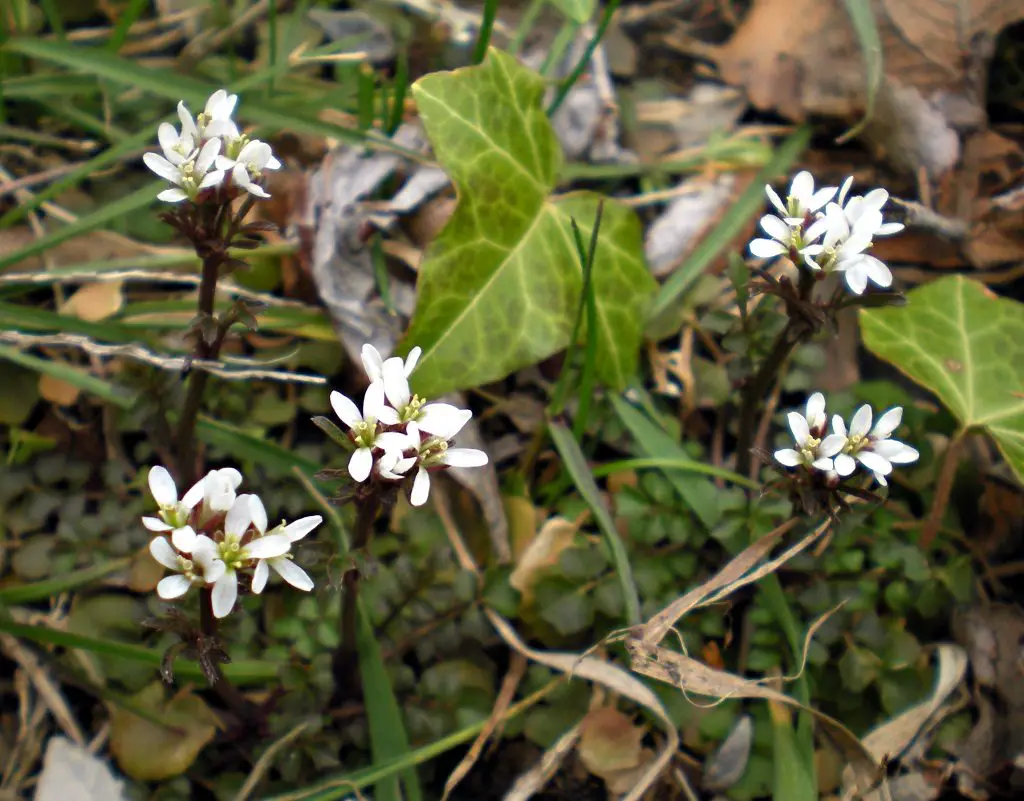
Hairy Bittercress is a small annual weed known for its white, four-petaled flowers and rosette of deeply lobed, dark green leaves. It typically grows just a few inches tall and has a wiry, erect flowering stem that emerges from a low basal rosette. Its foliage and stems are lightly covered with fine hairs.
This weed reproduces rapidly and has a unique biological feature: explosive seed dispersal. Once the seed pods mature, they eject seeds forcefully when disturbed, allowing it to colonize surrounding areas quickly. Hairy Bittercress completes its life cycle early in the growing season, often appearing as one of the first spring weeds.
Hairy Bittercress prefers moist, disturbed soils and shady environments, making it common in garden beds, greenhouses, and along walkways. It is most prevalent in USDA zones 4 through 9, especially in areas with cool, wet winters. Its rapid spread and early emergence make it a nuisance for gardeners and landscapers alike.
Queen Anne’s Lace (Daucus carota)
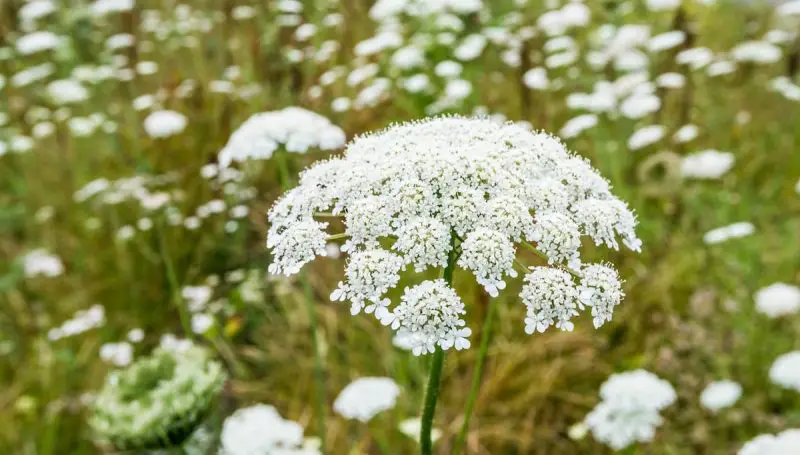
Queen Anne’s Lace is a tall, biennial weed with delicate, flat-topped clusters of tiny white flowers that resemble lacework. These flowers form broad umbels, often with a single dark purple floret at the center. Its leaves are finely divided and resemble those of carrots, and its stems are hairy and hollow.
As a biennial, this plant grows as a low rosette in its first year, storing energy in its long taproot. In the second year, it sends up tall flower stalks that can reach heights of 3 to 4 feet. It reproduces by seed and is known for thriving in poor or disturbed soils where competition is minimal.
Queen Anne’s Lace is commonly found in meadows, roadsides, open fields, and waste areas. It grows best in full sun and well-drained soils, tolerating dry and rocky conditions. Native to Europe but now widespread in North America, it thrives in USDA zones 3 through 9 and is sometimes considered invasive in certain habitats.
Garlic Mustard (Alliaria petiolata)
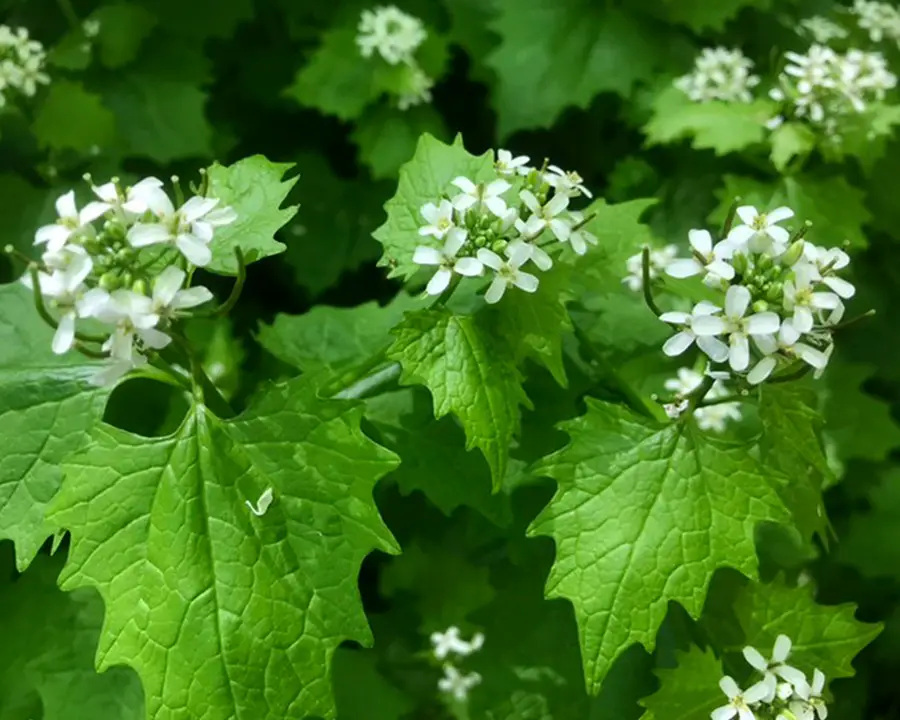
Garlic Mustard is a biennial herbaceous weed that produces clusters of small, white, four-petaled flowers atop tall, slender stems. Its heart-shaped leaves emit a strong garlic smell when crushed, which is a key identifying trait. The first-year rosettes remain low to the ground, while second-year plants grow up to 3 feet tall.
This weed is highly invasive and biologically aggressive, particularly in shaded forested areas. It displaces native vegetation by secreting chemicals into the soil that inhibit the growth of other plants and fungi. It reproduces solely by seed and can produce thousands of seeds per plant, spreading quickly.
Garlic Mustard prefers shaded woodlands, forest edges, and moist, disturbed soils. It is especially common along trails, roadsides, and riparian zones. It thrives in USDA hardiness zones 4 through 9 and has spread throughout much of the eastern and central United States. Its ability to dominate ecosystems has made it a major concern for conservationists.
Shepherd’s Purse (Capsella bursa-pastoris)
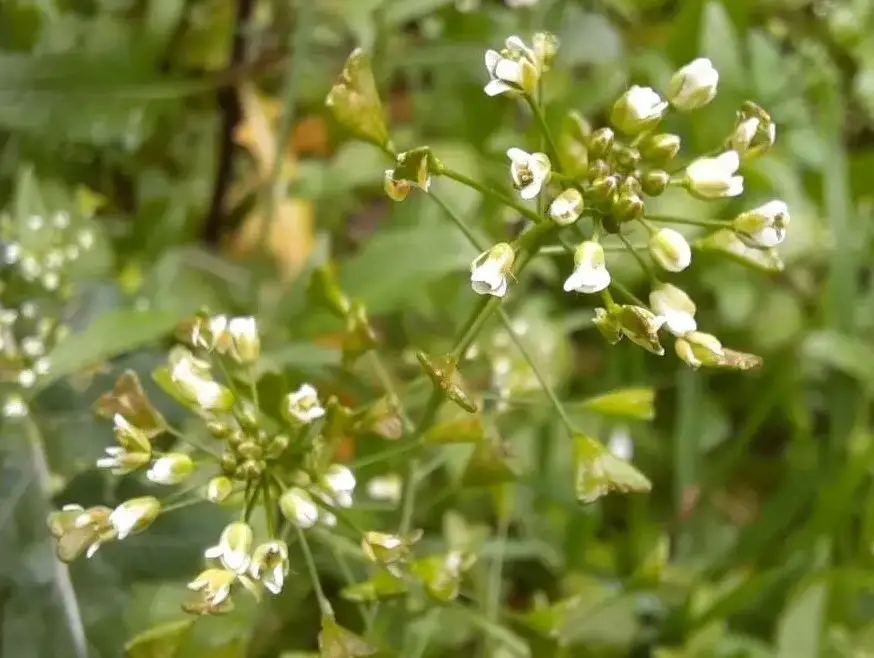
Shepherd’s Purse is a small annual weed distinguished by its heart-shaped seed pods, which dangle from slender stalks and resemble tiny purses. The white flowers are tiny and form in small clusters at the tips of vertical flowering stems, while the basal leaves form a low rosette with toothed margins. It typically grows to about 6 to 18 inches tall.
This plant has a fast-growing life cycle and can flower and set seed within a few weeks of germination. It reproduces exclusively by seed, with each plant capable of producing thousands of seeds. Flowering occurs nearly year-round in temperate climates, making it a persistent presence in disturbed habitats and cultivated lands.
Shepherd’s Purse prefers disturbed soils, thriving in gardens, agricultural fields, roadsides, and construction sites. It tolerates a range of conditions, from full sun to partial shade, and grows well in USDA hardiness zones 4 through 9. Its resilience and high seed output make it a common and often stubborn weed in both urban and rural settings.
Wild Radish (Raphanus raphanistrum)

Wild Radish is a robust annual or biennial weed recognized for its white to pale yellow flowers, each with four petals often marked by delicate purple veins. The flowers bloom on tall, branching stalks above lobed, bristly green leaves. It can grow up to 3 feet tall and has a rough, hairy texture throughout.
This weed grows vigorously and is highly competitive in open spaces. It typically germinates in spring or fall and produces a long taproot. Flowering occurs throughout spring and early summer, and seed pods form shortly after. Its seeds are long-lived in the soil, making management difficult once established.
Wild Radish thrives in full sun and well-drained soils, commonly invading fields, pastures, roadsides, and disturbed areas. It is widespread across North America and other temperate regions, performing well in USDA hardiness zones 4 through 9. It’s often considered a nuisance in agricultural settings due to its rapid spread and competition with crops.
Daisy Fleabane (Erigeron annuus)
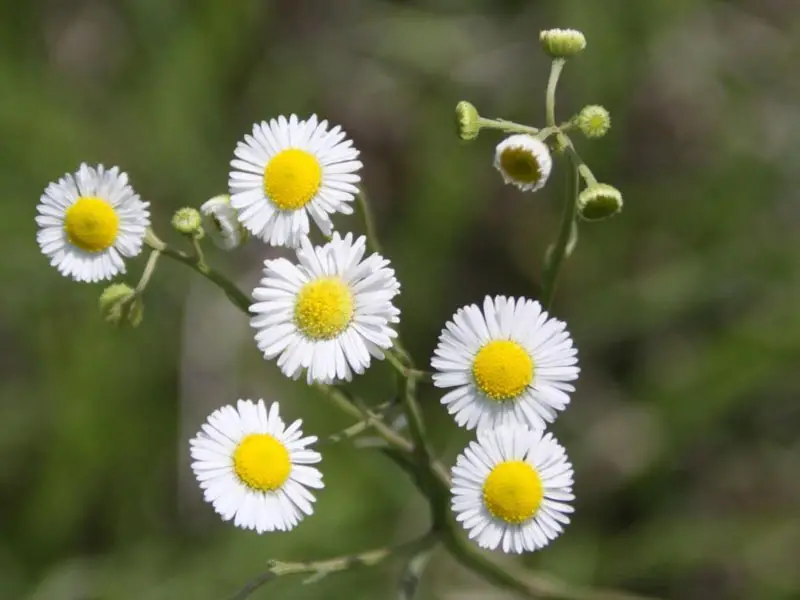
Daisy Fleabane is a tall, airy annual or biennial weed with small, daisy-like white flowers that have bright yellow centers. Each flower head is composed of dozens of narrow, thread-like petals and sits atop a branched, upright stem. The leaves are alternate, hairy, and often toothed, with a rough texture.
It typically flowers from late spring through summer and spreads through both seeds and basal shoots. Each plant can produce hundreds of flowers, and it is known for its long blooming period, which contributes to its success as a colonizer. Insects, particularly pollinators, are attracted to its bright floral display.
Daisy Fleabane grows well in a variety of environments, especially in full sun and moderately dry soils. It is commonly found along roadsides, in open fields, prairies, and disturbed sites throughout USDA zones 2 through 9. While it may appear weedy, it is also valued for its attractiveness to pollinators and its role in early successional habitats.
Wild Garlic (Allium vineale)
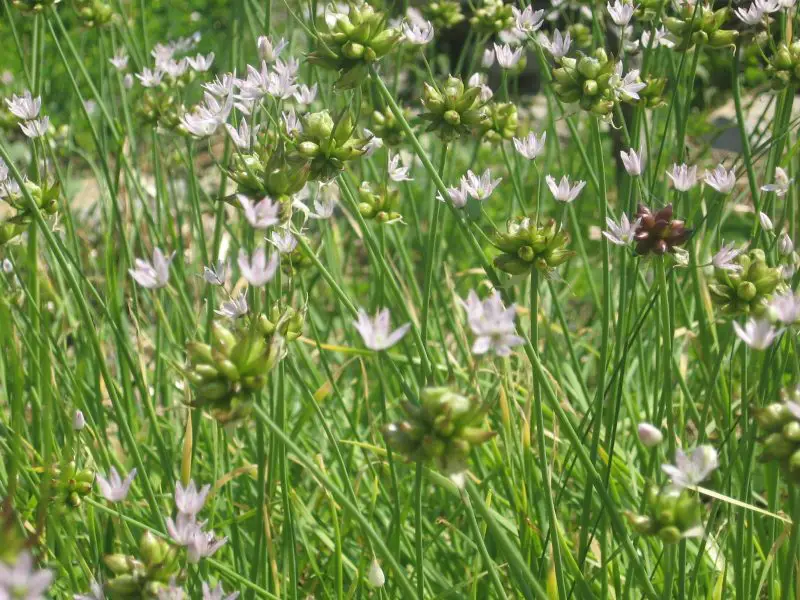
Wild Garlic is a perennial weed with slender, hollow, grass-like leaves that emerge from underground bulbs. It produces clusters of small white to pinkish flowers arranged in rounded umbels atop tall, leafless stems. When crushed, both the leaves and bulbs emit a strong onion or garlic scent, making identification easy.
This plant reproduces through seeds, underground bulbs, and aerial bulbils (small bulblets formed at the flower head), allowing it to spread aggressively in lawns, pastures, and uncultivated land. It is cool-season and typically appears in fall through spring, remaining dormant during hot summer months.
Wild Garlic favors open, sunny locations with well-drained soils, although it can tolerate a range of conditions. It is widespread in fields, roadsides, and grassy areas and is considered invasive in many parts of the U.S. It thrives in USDA zones 3 through 9 and can be difficult to control due to its persistent underground bulbs.
Common Yarrow (Achillea millefolium)
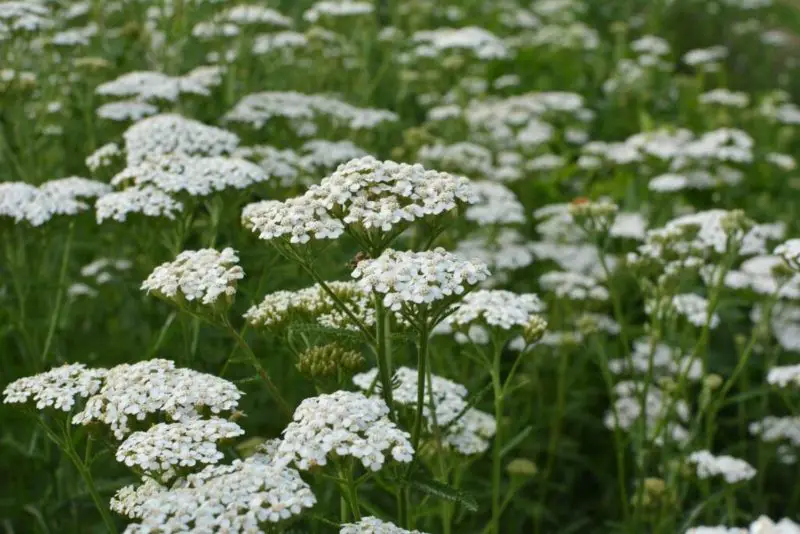
Common Yarrow is a hardy, herbaceous perennial known for its clusters of small, flat-topped white flowers and finely divided, fern-like foliage. The flowers bloom in dense umbels and emit a pleasant, spicy scent. The plant typically grows 1 to 3 feet tall and has a bushy appearance when mature.
Biologically, Common Yarrow is drought-tolerant and spreads both by seed and creeping rhizomes. It blooms from late spring to early fall and attracts a variety of pollinators, including butterflies and bees. Its deep roots and dense foliage make it useful for erosion control and soil stabilization.
Common Yarrow is found in meadows, fields, roadsides, and other disturbed areas. It tolerates a wide range of soils, from sandy to clay-rich, and prefers full sun to light shade. This species is native to North America and Eurasia and thrives in USDA zones 3 through 9, making it a common and resilient plant across many landscapes.
Field Pennycress (Thlaspi arvense)

Field Pennycress is an annual weed that features small, white, four-petaled flowers arranged in racemes at the tops of upright stems. The plant typically grows 1 to 2 feet tall and is easily identified by its flat, round, notched seed pods that resemble coins. Its leaves are narrow and clasp the stem directly.
Biologically, this species has a rapid growth cycle and germinates readily in disturbed soils. It blooms from spring through early summer, setting seed quickly. Field Pennycress belongs to the mustard family and emits a mildly pungent odor when crushed. It’s considered a winter annual in many regions, germinating in the fall and flowering in the spring.
It is commonly found in agricultural fields, roadsides, and waste areas where the soil has been disturbed. Field Pennycress is widely distributed across temperate regions of North America and performs best in full sun and well-drained soils. It thrives in USDA hardiness zones 3 through 8 and is considered both a weed and a potential cover crop due to its early growth.
Hoary Alyssum (Berteroa incana)
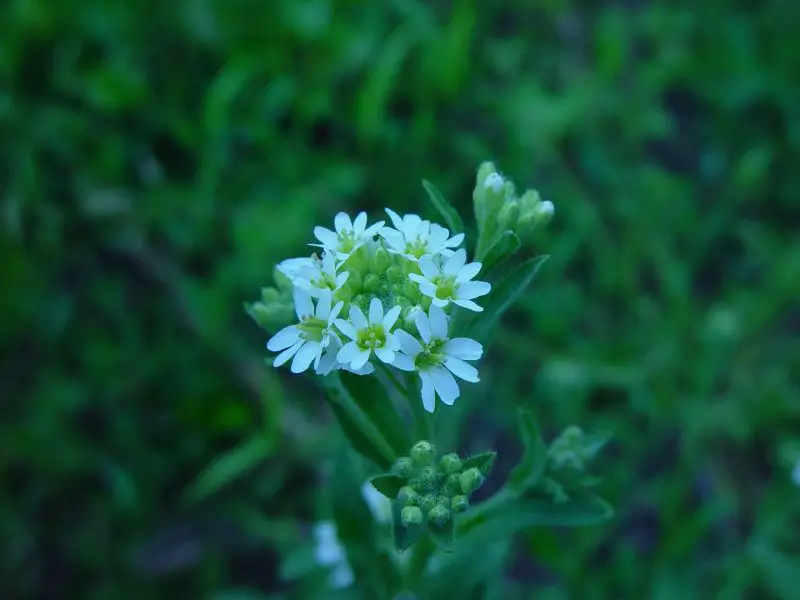
Hoary Alyssum is an upright, short-lived perennial or biennial plant with narrow gray-green leaves and small white flowers with four deeply notched petals. The entire plant is covered in fine, silvery hairs, giving it a hoary appearance. It typically grows 1 to 3 feet tall and has a branching growth habit.
This plant blooms from late spring to early fall and reproduces by seed. It is notorious for its toxicity to horses when ingested, often contaminating hay or forage fields. The seeds are persistent and can remain viable in the soil for several years. Its tolerance for dry, nutrient-poor conditions makes it a resilient weed.
Hoary Alyssum grows best in dry, sandy, or gravelly soils and full sunlight. It is commonly found along roadsides, railways, pastures, and disturbed areas throughout much of the northern United States and Canada. It thrives in USDA zones 3 through 8 and is considered invasive in some regions due to its aggressive spread and adverse impact on grazing animals.
Mouse-ear Chickweed (Cerastium fontanum)
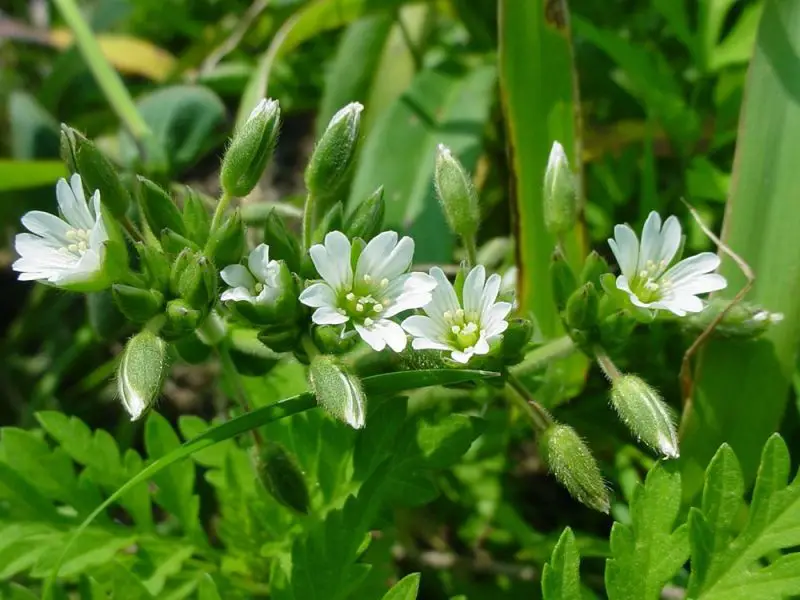
Mouse-ear Chickweed is a low-growing perennial weed with soft, fuzzy leaves that resemble the ears of a mouse, hence its name. The white flowers are star-like with five deeply cleft petals, giving them the appearance of having ten petals. This plant forms dense mats that spread close to the ground, often crowding out turfgrass.
It grows year-round in cooler climates and is especially common in spring and fall. Mouse-ear Chickweed reproduces via seeds and creeping stems that root at the nodes, allowing it to establish quickly in lawns and compacted soils. It can tolerate frequent mowing and thrives in moist environments.
This weed is widespread across North America and is a common sight in lawns, golf courses, playgrounds, and disturbed sites. It prefers moist, shady to partially sunny areas and well-drained soils. It thrives in USDA hardiness zones 3 through 9 and is often a persistent challenge in turf management due to its spreading nature and low profile.
Wild Carrot (Daucus carota)
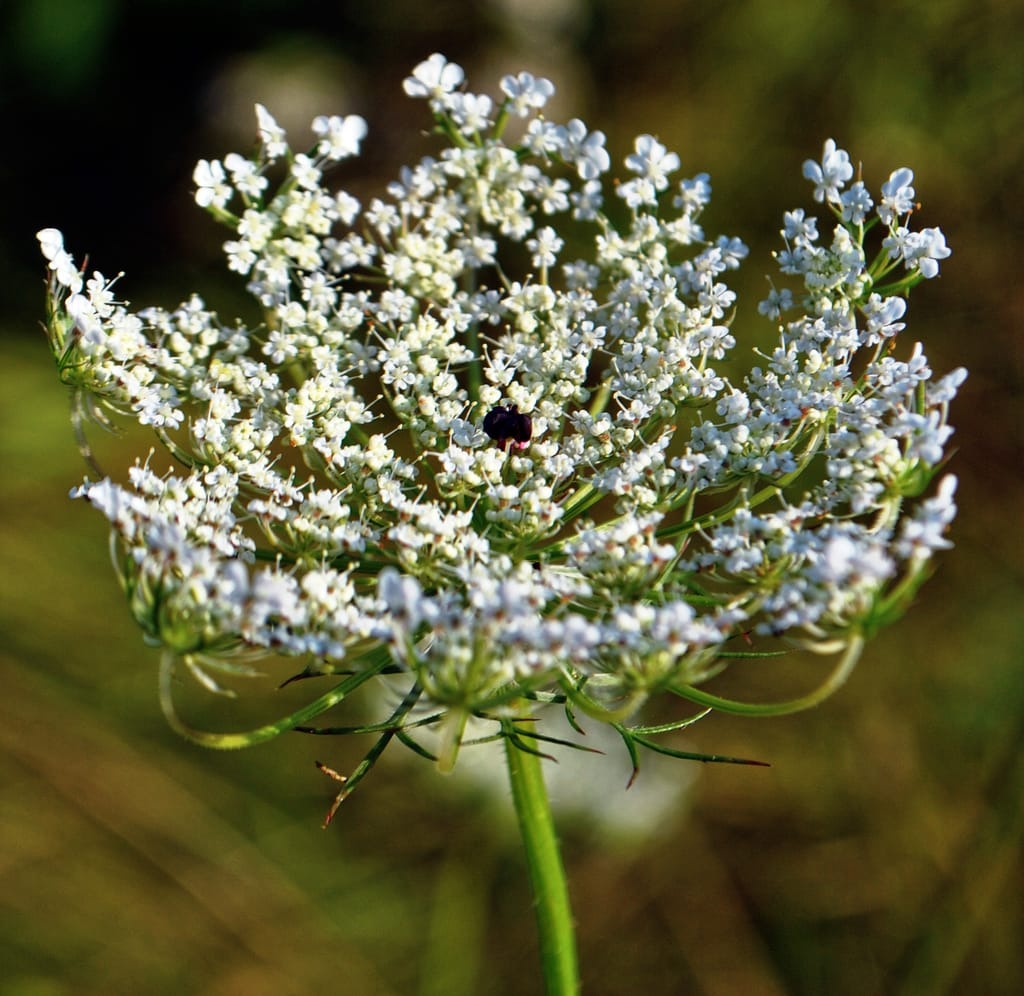
Wild Carrot, also known as Queen Anne’s Lace, is a biennial plant with flat-topped clusters of delicate white flowers arranged in umbrella-shaped umbels. Each umbel typically has a tiny purple flower at its center, although this isn’t always present. The leaves are finely divided and resemble those of a carrot plant, while the root smells distinctly like carrots.
During its first year, the plant develops a basal rosette of foliage and a deep taproot. In its second year, it sends up a flowering stalk that can reach 2 to 4 feet in height. It flowers throughout the summer and into early fall, after which it produces bristly, curved seed heads that resemble bird nests.
Wild Carrot is native to Europe and Asia but has naturalized widely across North America. It thrives in sunny, open areas such as fields, roadsides, meadows, and disturbed sites. This plant prefers well-drained soils and is hardy in USDA zones 3 through 9. Though attractive, it can become weedy in unmanaged areas and is often confused with the toxic poison hemlock.
Enchanter’s Nightshade (Circaea lutetiana)
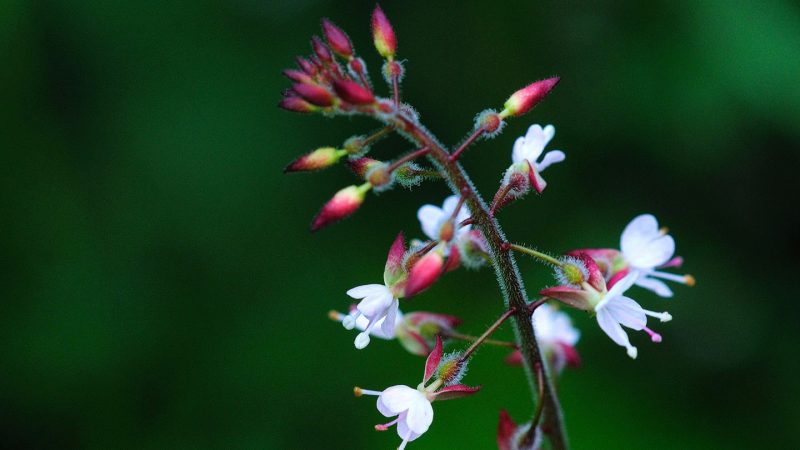
Enchanter’s Nightshade is a delicate woodland perennial with small, white flowers that each have only two deeply cleft petals, giving the impression of four. The flowers grow on slender spikes, and the plant’s foliage consists of opposite, ovate leaves with pointed tips and toothed margins. It generally grows between 6 inches and 2 feet tall.
This species reproduces by both seed and underground rhizomes. Its flowers bloom in mid to late summer and are followed by sticky seed pods that readily adhere to animal fur and clothing, aiding in seed dispersal. Despite its name, it is not toxic like other “nightshade” plants and belongs to the evening primrose family.
Enchanter’s Nightshade thrives in moist, shaded woodland environments and prefers rich, humus-laden soils. It is commonly found in deciduous forests, shady garden areas, and along trails throughout eastern North America and parts of Europe. It grows well in USDA hardiness zones 4 through 8 and is an important understory plant in temperate forests.
Hedge Bindweed (Calystegia sepium)
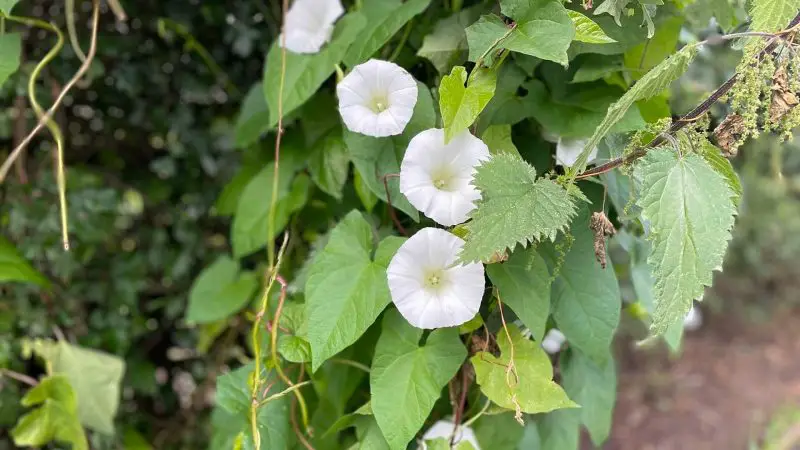
Hedge Bindweed is a fast-growing, perennial vine recognized by its large, trumpet-shaped white flowers, which can reach up to 2 inches across. Its leaves are arrowhead-shaped, and the plant twines around other vegetation for support. It resembles common morning glory but differs by having a larger flower and a pair of small leafy bracts below the bloom.
This plant spreads through both seeds and an extensive rhizome system, making it highly persistent and invasive in many environments. It typically blooms from late spring to early fall, and its vines can grow over 10 feet long in a single season. Hedge Bindweed’s vigorous climbing and smothering habit can cause significant damage to garden plants, shrubs, and crops.
It is commonly found along fences, hedgerows, roadsides, and in gardens throughout North America and Europe. The plant prefers moist, fertile soil but is adaptable to a wide range of conditions, including disturbed or neglected areas. It thrives in USDA hardiness zones 4 through 9 and can be difficult to control once established.
Black Medic (Medicago lupulina) (rarely white)
Black Medic is a low-growing annual or short-lived perennial weed, typically identified by its small yellow flower clusters that sometimes appear in pale, whitish shades. Its growth habit closely resembles clover, with trifoliate leaves and sprawling stems that root at the nodes. The plant forms dense mats and produces tiny black seed pods, hence its name.
Although yellow is the common flower color, environmental stress or genetic variation may cause blooms to appear unusually pale or off-white. It thrives in dry, compacted, or nutrient-poor soils and often indicates poor soil conditions. Black Medic blooms from late spring through fall and can complete its life cycle rapidly.
It grows widely in lawns, roadsides, vacant lots, and along sidewalks across North America, Europe, and Asia. It is tolerant of drought and heavy foot traffic, often outcompeting turfgrass. This weed grows best in full sun and well-drained soils and is suitable for USDA hardiness zones 3 through 10. Though not typically invasive, its presence may signal a need to improve soil health.
Field Bindweed (Convolvulus arvensis)

Field Bindweed is a low-growing to trailing perennial vine known for its trumpet-shaped flowers that range from white to pale pink. The flowers are typically about 1 inch in diameter and resemble miniature morning glories. Its leaves are arrowhead-shaped and alternate along slender, twining stems that help the plant sprawl or climb over nearby vegetation.
This weed has an extremely deep and persistent root system, including rhizomes and taproots that can reach depths of 10 feet or more. It spreads both vegetatively and by seed, making it very difficult to control once established. Field Bindweed blooms from late spring through early fall and is known for its resilience in dry conditions.
It thrives in disturbed soils such as croplands, field margins, fence lines, and waste areas. The plant is widespread across North America, Europe, and Asia, particularly in temperate climates. It grows well in USDA hardiness zones 3 through 9 and is considered one of the most problematic agricultural weeds due to its aggressive spread and strong competition with crops.
White Dead-nettle (Lamium album)
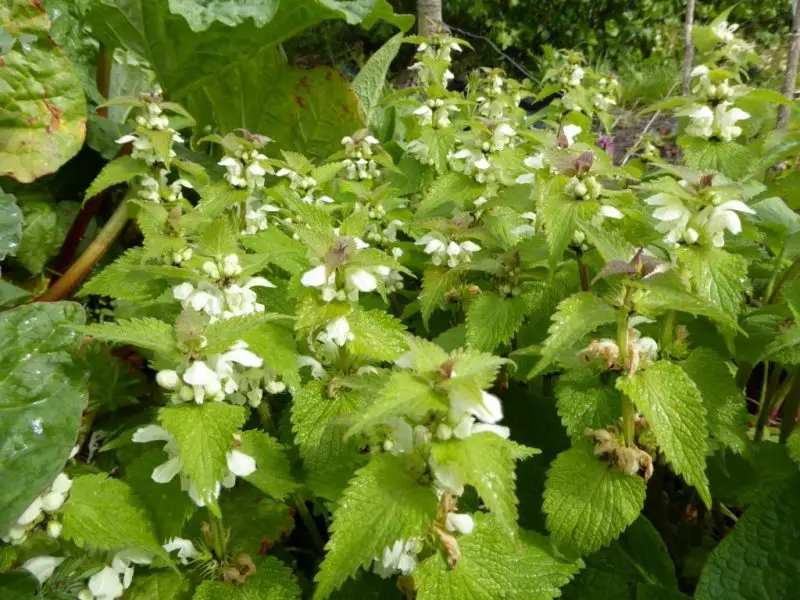
White Dead-nettle is a perennial herbaceous plant that resembles stinging nettles in appearance but lacks the stinging hairs. It has soft, serrated, heart-shaped leaves and square stems, a trait common among plants in the mint family. Its tubular white flowers appear in whorls around the upper leaf axils and attract pollinators like bees.
It blooms from early spring through autumn and can reproduce via creeping stolons and seeds. White Dead-nettle is often among the first plants to flower in spring, providing an early nectar source. Although it looks like a weed, it is sometimes cultivated in wildlife gardens for its ecological benefits.
This plant prefers moist, nutrient-rich, and partially shaded areas such as woodland edges, hedgerows, and shaded gardens. It is native to Europe and Asia but has naturalized in parts of North America. It flourishes in USDA hardiness zones 4 through 8 and is commonly found in environments with light shade and well-drained soil.
Knotweed (Polygonum aviculare)
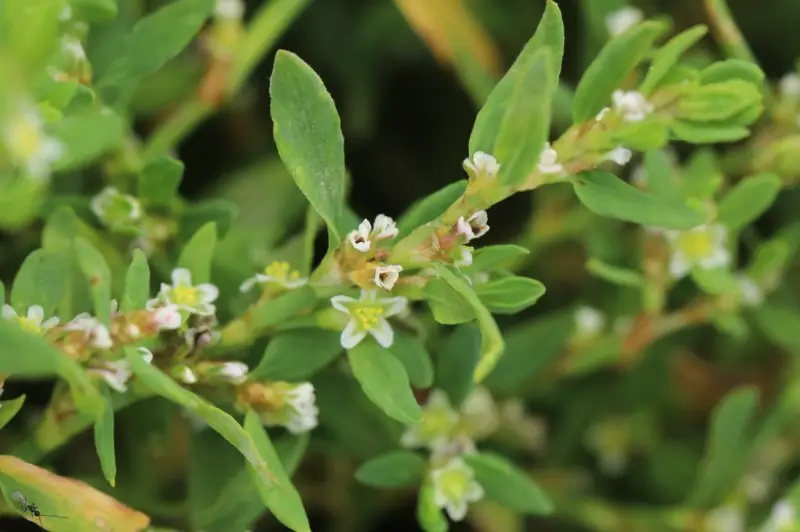
Knotweed is a low-growing, mat-forming annual weed recognized by its slender stems and small, inconspicuous white or pale pink flowers that grow from the leaf axils. Its narrow leaves are alternate and often bluish-green, and the plant tends to sprawl close to the ground, forming dense patches.
It thrives in compacted or disturbed soils and tolerates a wide range of conditions. Knotweed flowers from spring through fall and reproduces through seed, with each plant capable of producing thousands of seeds per season. Due to its ability to root at the nodes, it spreads efficiently across bare ground and walkways.
It is commonly seen in sidewalks, roadsides, construction sites, and vacant lots throughout North America, Europe, and Asia. It is adapted to USDA hardiness zones 3 through 10 and is particularly abundant in areas with poor soil quality and high foot traffic.
Wild Madder (Galium mollugo)
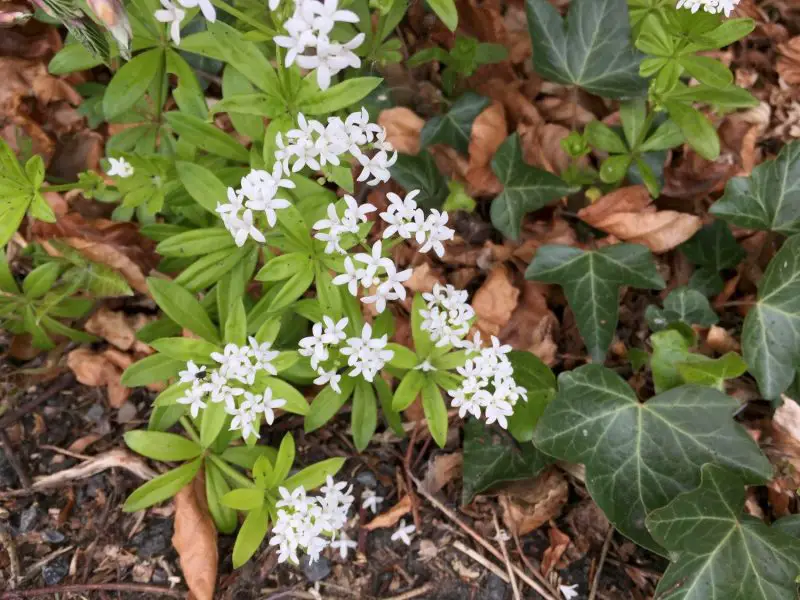
Wild Madder is a delicate, sprawling perennial that produces clusters of tiny white flowers on thin, branched stems. Its lance-shaped leaves grow in whorls and give the plant a soft, airy appearance. The flowers bloom from late spring to mid-summer and are attractive to pollinators like bees and hoverflies.
It spreads both by seed and creeping stems and tends to form low, tangled mats in open habitats. Wild Madder thrives in sunny, dry meadows, grassy slopes, and woodland edges, where it can climb lightly over other plants for support without becoming aggressive.
This plant is native to Europe but has spread to parts of North America. It grows best in light, well-drained soil and is tolerant of drought conditions. Wild Madder is suitable for USDA hardiness zones 4 through 8 and prefers open habitats with minimal shade.
Sandwort (Arenaria serpyllifolia)
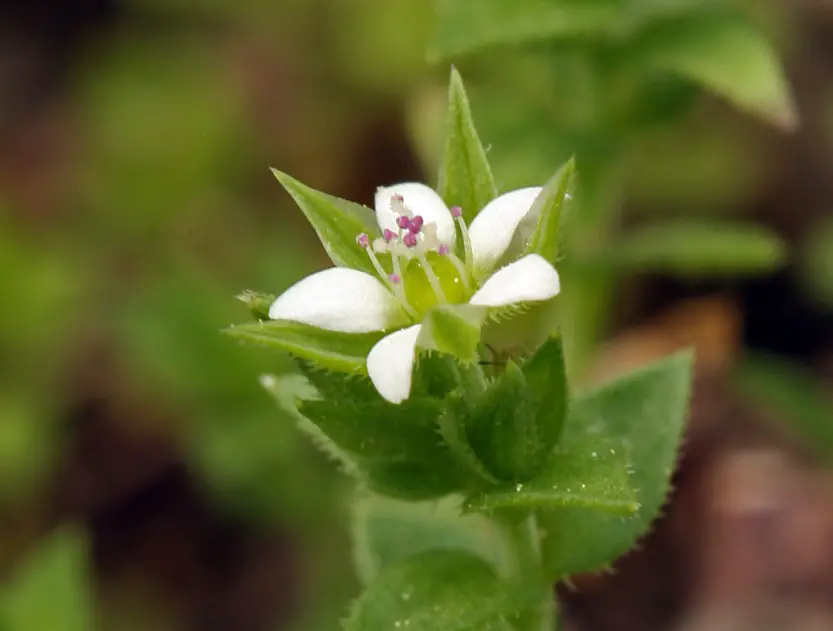
Sandwort is a small, low-growing annual or biennial herb with sparse clusters of tiny white flowers and fine, thread-like stems. The leaves are small and narrow, giving the plant a delicate appearance. Its flowers bloom in spring and early summer and are usually no more than a few millimeters across.
This plant is well adapted to dry, sandy, or rocky soils and is often one of the first species to colonize disturbed areas. It reproduces by seed and has a modest growth habit, typically forming loose tufts or short mats that do not aggressively spread.
Sandwort is native to Europe and temperate regions of Asia but is found in many upland and lowland areas worldwide. It is common in mountains, sandy fields, dry meadows, and fallow land. It prefers full sun and poor, well-drained soils, thriving in USDA hardiness zones 4 through 9.
Watercress (Nasturtium officinale)
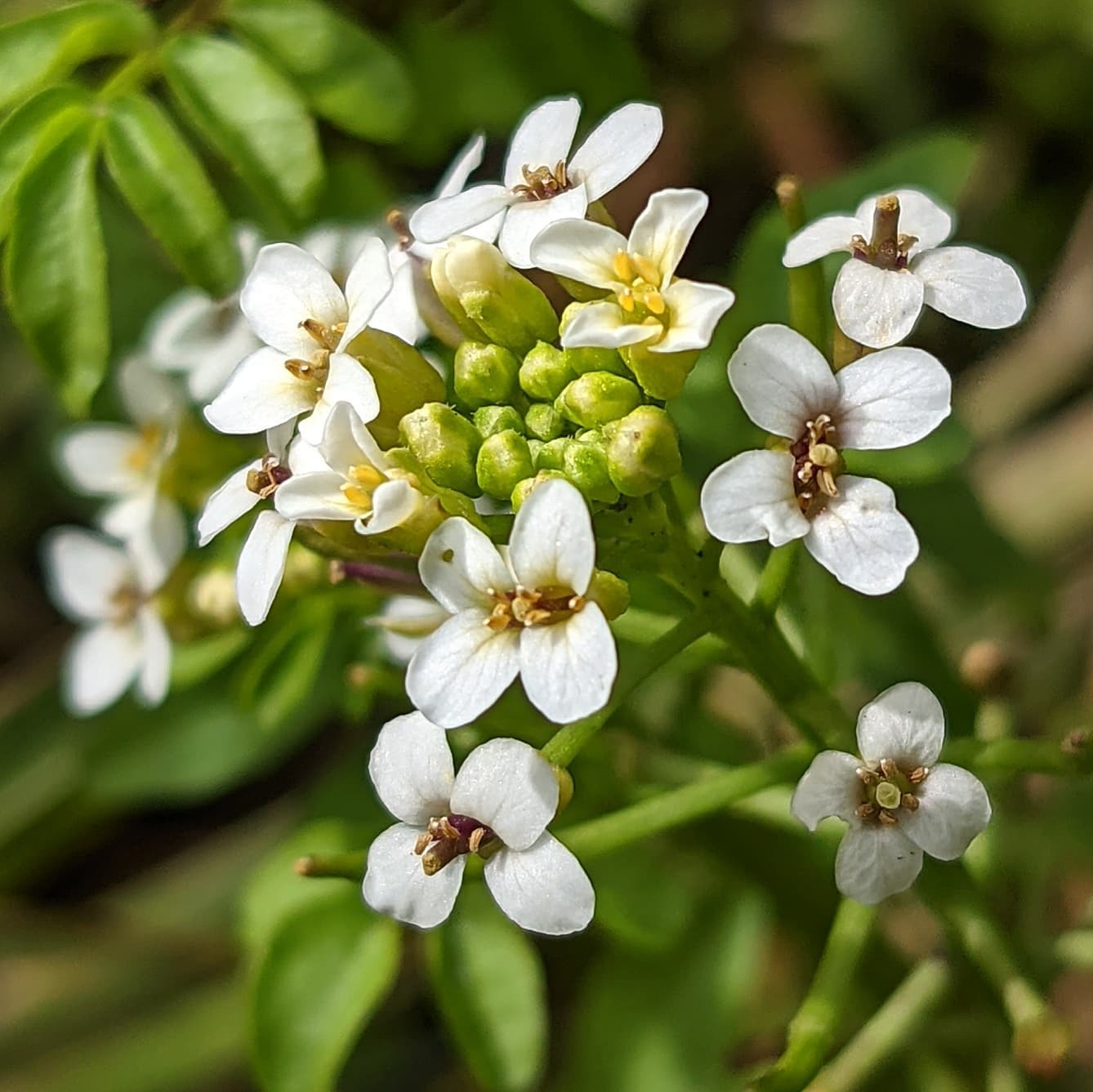
Watercress is a fast-growing aquatic or semi-aquatic perennial herb with small white flowers arranged in loose clusters. Each flower has four petals and appears on branching stems that rise above the plant’s leafy base. Its leaves are smooth-edged and pinnately compound, typically dark green and tender.
This plant grows submerged or floating in shallow, slow-moving water, such as streams, ditches, and ponds. It reproduces both by seed and by creeping stems that root at the nodes, forming dense colonies. While watercress is widely consumed as an edible green due to its peppery taste and high nutritional value, it can become invasive and dominate native aquatic vegetation.
Native to Europe and Asia, watercress has naturalized in temperate regions around the world, especially in USDA hardiness zones 6 through 9. It prefers cool, clean, running water and partial to full sun, making it common in wetland habitats and spring-fed creeks.
Wild Strawberry (Fragaria vesca)
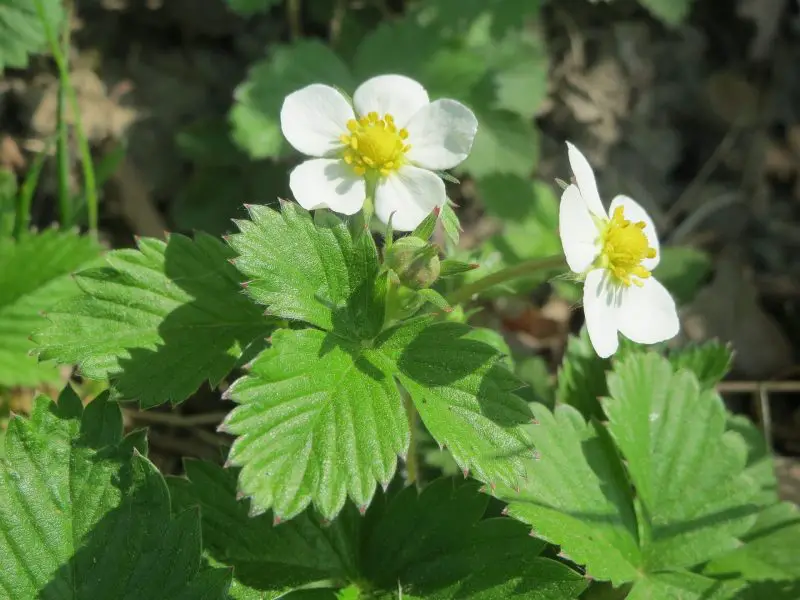
Wild Strawberry is a low-growing perennial plant with five-petaled white flowers that typically bloom in spring and early summer. The flowers have yellow centers and are followed by small, sweet, red fruits. Its trifoliate leaves are toothed and slightly hairy, and the plant spreads by slender runners (stolons).
Though prized for its edible fruit and ornamental appeal, Wild Strawberry can spread rapidly and become weedy in lawns and garden beds. It grows in a clumping or mat-forming habit, favoring edges of woods, open meadows, and disturbed soil. The plant attracts pollinators and small wildlife, and it also serves as ground cover in some managed landscapes.
This species is native to North America and Eurasia and thrives in USDA hardiness zones 3 through 9. It prefers moist, well-drained soil and partial sun but tolerates a range of light conditions. Its ability to self-propagate and adapt to various environments makes it common in both wild and cultivated settings.
Hedge Mustard (Sisymbrium officinale)

Hedge Mustard is an upright annual or biennial plant known for its small white to pale yellow flowers that cluster at the tops of its stems. Each flower has four petals arranged in a cross shape, typical of the mustard family. The leaves are alternate, rough-edged, and deeply lobed, with a slightly pungent aroma when crushed.
This weed commonly grows in disturbed areas such as roadsides, field margins, construction zones, and abandoned lots. It blooms from late spring into summer and produces slender seed pods that grow upright along the stem. Hedge Mustard is known to self-seed freely, making it a persistent presence in ruderal habitats.
Native to Europe and parts of Asia, the plant has become widespread across North America. It is well-suited to USDA hardiness zones 5 through 9 and favors dry, well-drained soils with full sun exposure. Though occasionally used in traditional medicine or as a minor edible green, it is mostly recognized as a hardy weed in unmanaged or neglected sites.
Wild Lettuce (Lactuca serriola)
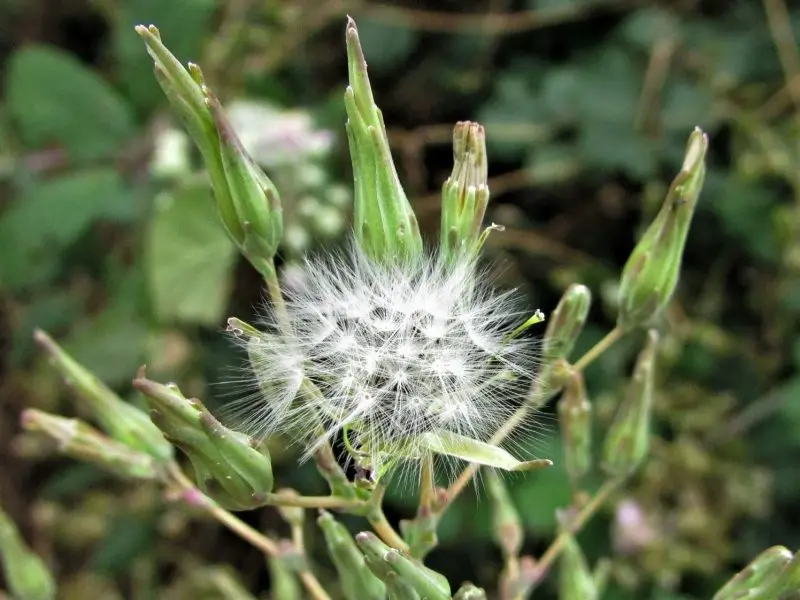
Wild Lettuce is a biennial herbaceous plant that can grow over 6 feet tall, typically recognized by its prickly leaves with deeply toothed edges and a row of small spines along the underside midrib. While the flowers are usually pale yellow, some rare variants may display white or whitish-tinged blooms. These flowers are daisy-like and appear in loose clusters at the top of the plant during the summer months.
The plant exudes a milky sap when broken and is part of the sunflower family. It begins as a basal rosette in its first year and sends up a tall flowering stalk in its second. Wild Lettuce produces many wind-dispersed seeds, allowing it to spread efficiently in open or disturbed areas. Some parts of the plant have mild sedative properties and were historically used in herbal medicine.
It thrives in a range of environments, especially in disturbed soils, abandoned lots, roadsides, and field margins. Wild Lettuce is found across North America, Europe, and parts of Asia, and it adapts well to USDA hardiness zones 4 through 9. It prefers full sun and dry to moderately moist soils but tolerates drought once established.


